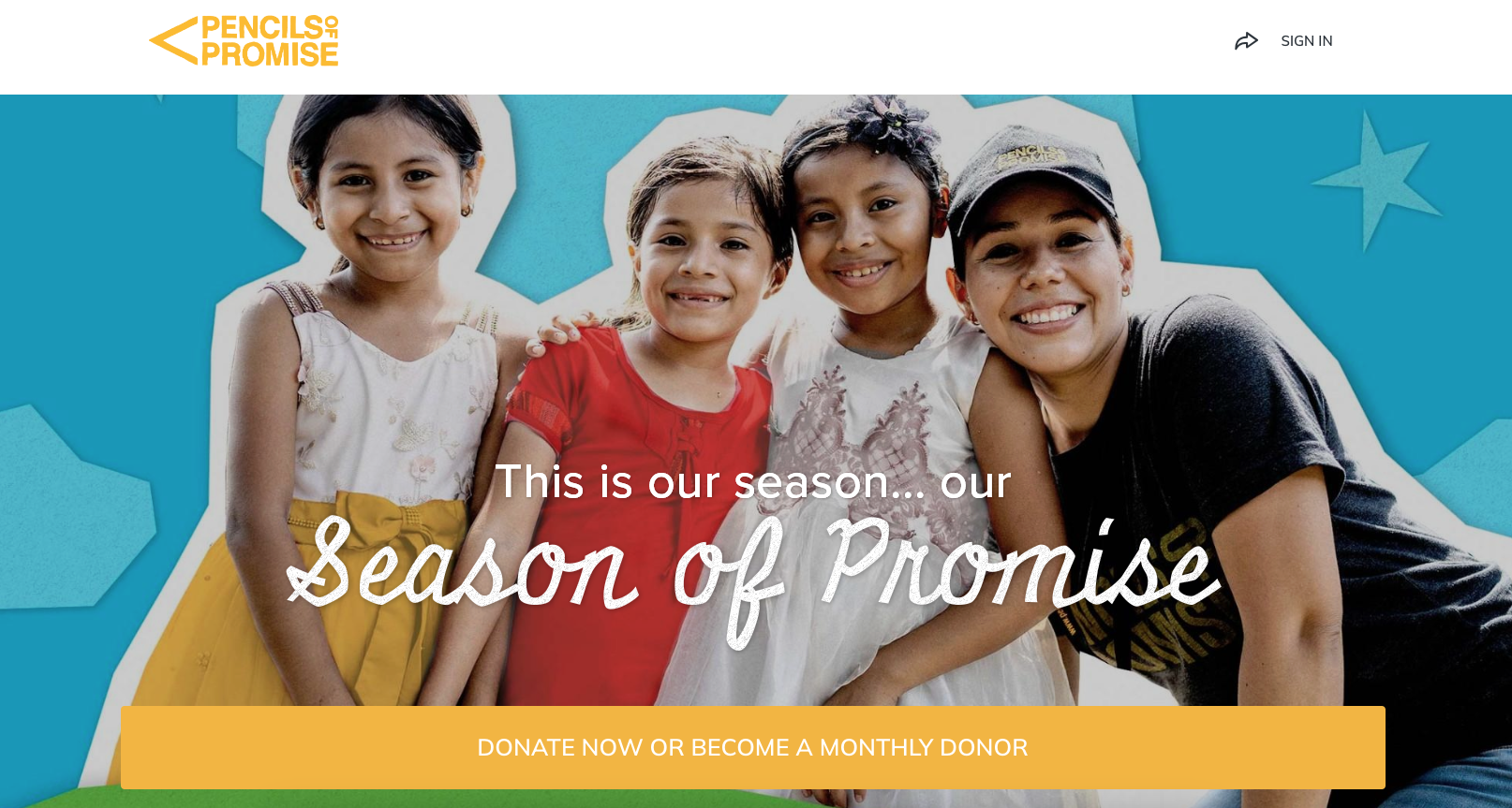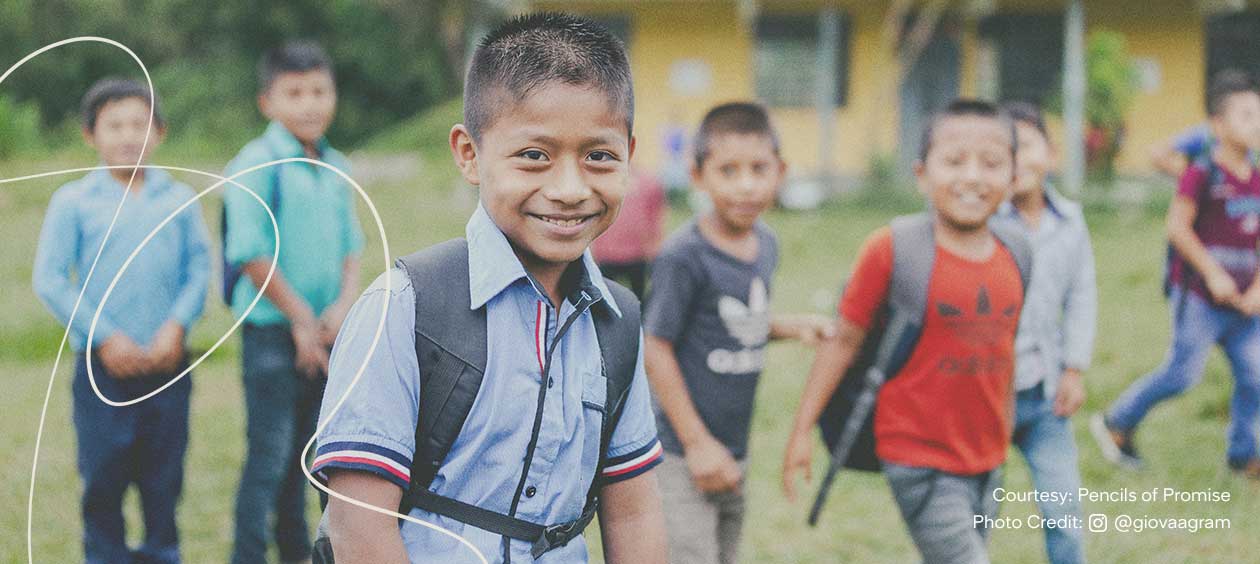5 Post-Giving Tuesday Strategies to Boost Your Nonprofit’s Year-End Impact

Request a Demo
Learn how top nonprofits use Classy to power their fundraising.
Seasoned nonprofits know that strong Giving Tuesday strategies are the foundation of fundraising success. They also know that engaging supporters after this high-traffic donation day is just as critical to achieving lofty year-end goals and sustaining their missions for the long term.
Data shows that 25% of all donation volume on Classy occurs between Giving Tuesday and December 31. The best way to capitalize on this organic spike in giving is to solidify how your nonprofit will transition to a concentrated year-end appeal now that Giving Tuesday has wrapped.
Keep donors on track to give with these five post-Giving Tuesday strategies. Our list starts with the lightest lifts and gradually builds to more ambitious tactics, allowing your nonprofit to determine which strategies make the most sense for your bandwidth, resources, and goals.
Download Your Smart Guide to Strong Year-End FundraisingAdd These 5 Post-Giving Tuesday Strategies to Your Playbook
1. Inspect Giving Tuesday Analytics to Inform Your Year-End Strategy
Understanding “the why” behind each Giving Tuesday outcome will allow you to turn campaign data from mere numbers into valuable insights and action. And when combined with the right fundraising platform, you can leverage each finding to amplify your future year-end efforts.
Turn Fundraising Data into ActionDecode Donation Fluctuations
When analyzing your online Giving Tuesday donations, there are a few numbers to focus on:
- Page and sitewide traffic
- Conversion rate
- Average donation amount
- Difference in recurring donations versus one-time donations
Together, these metrics influence donation volume and help tell a story.
Our blog, Decoding Donation Fluctuations, dives into the value of each metric and provides step-by-step instructions on evaluating your performance in each area. Dive in to learn more.
Identify Your Highest-Performing Channels
Identify how many pageviews and unique users your Giving Tuesday campaign attracted and what proportion of those pageviews came from each channel. These channels may include email, social media, paid advertising, blog posts, and others.
It’s critical to know which promotional strategies are worth investing more time and resources into and which you can steer away from in the future.
Determine Which Channels are Most Lucrative
It’s also helpful to know how many transactions originated from each channel and how much revenue these sources generated. For instance, it might be worth investing a larger portion of your budget into email appeals if that channel was most effective in converting Giving Tuesday donations.
Dive into the Details
Use the plethora of metrics you can access via Google Analytics 4, like bounce rate, average time on page, and users by location, to support your year-end goals. Discover which Giving Tuesday strategies worked and which didn’t, and what opportunities you can capitalize on to apply learnings immediately and raise more for your mission.
Top GA4 Reports for Nonprofits to Explore2. Stay at the Top of Donors’ Inboxes
A solid email strategy is crucial in retaining donors’ awareness and engagement between their Giving Tuesday donation receipt and your year-end appeal.
Speak to Each Donor Directly
Segment your email list to deliver a message that speaks directly to each group of target donors. These fundraising email templates are a great place to start.
There’s nothing more impersonal than being spoken to like you’re just another name on a mass mailing list. Make sure each of your donors feels like they’re being addressed directly with an authentic message.
Consider segmenting your donors based on their involvement with your Giving Tuesday campaign or their general involvement with your nonprofit. These segments could be organized in groupings like:
- Major donors
- First-time donors
- Recurring donors
- Repeat Giving Tuesday donors
- Donors who gave during a donation matching period
Speak to the particular impact each donor segment has on your organization and suggest the most relevant action they can take to continue that impact into the new year.
If you’re crafting an email for recurring donors, highlight the ongoing support their contributions make possible and how valuable their recurring donations are to the longevity of your mission. From there, clearly outline what increasing their regular gift by just a few dollars would do for your cause this year-end season and beyond.
When emailing first-time donors, it’s helpful to include proof points that support your call to action (CTA) or testimonials from beneficiaries who have been positively impacted by your work.
For this group, you can tap into success stories from the past year to show how their donations translate to change. Tailor each message based on the donor segment you’re targeting and the goal you’re trying to reach.
Get Creative with Subject Lines
Capture donors’ interest with unique fundraising email subject lines. Be sure to emphasize your cause, intrigue your reader, and add a personal touch. Keeping it short and enforcing a sense of urgency has proven to increase open rates, as well as including a number in the subject line.
You’ll also want to include your value upfront. Consider these Giving Tuesday subject line examples as inspiration for your year-end outreach.
Craft a Compelling Story That Motivates Action
Create One Targeted Ask
Get your most important point across immediately to ensure donors don’t abandon your message. Limit your CTA to one request and support that appeal with a compelling narrative.
You may have secondary goals around acquiring more recurring donors and boosting volunteer efforts, but you risk losing donors’ attention entirely if you offer too many options.
A series of impact emails is a great way to build a larger story arc. This can help support your campaign in a way that leaves no confusion about what action is the most impactful in that given moment.
Include Photos or Videos
Connect to potential donors and invoke action by complementing your text with photos or videos that allow your reader to experience your narrative. If people can put a face to your cause, they will likely remember that when it comes time to donate again.
Optimize for Mobile
Nearly 1.7 billion users check email on a smartphone, which we can only expect to increase with time.¹ That said, there’s a high chance your email will be viewed on a mobile screen. Don’t let an unresponsive appeal be why you miss out on potential donations.
Learn How to Format Your Email for Mobile Devices3. Upgrade Your Supporters to Become Recurring Donors
Take advantage of the organic support that comes with Giving Tuesday to establish predictable funding for your mission and allow supporters to give effortlessly over time.
Acquire New Recurring Donors
Identify Repeat Supporters
Using donor insight reports like Classy’s Returning One-Time Donors Report, identify donors who return year after year to support your good work. Offer them a way to make their impact go further.
Provide Flexibility
Create an optimal donation experience for these donors by offering multiple giving frequencies, flexible payment options, and the option to select an end date for their recurring donation.
Say Thank You
Thank your supporters for participating in previous Giving Tuesday or year-end campaigns by including a recurring donation CTA to encourage ongoing support. Further personalize your outreach by picking up the phone to call these loyal supporters, or brainstorm a way to connect with them in person at your next event.
Did You Know? Classy’s Why America Gives report found that 72 percent of donors share they would likely donate through PayPal, Venmo, or cryptocurrency if nonprofits present the options. Position your organization to stay on pace with this growing trend by adapting your donation website to feel like a seamless extension of today’s most successful brands.
7 Ways to Boost Recurring Donor AcquisitionUpgrade Existing Recurring Donors
Acknowledge Previous Gifts
Recurring donors are the lifeblood of any nonprofit. Clearly communicate that sentiment to each and every person who contributes to your cause on a recurring basis, and remind them of the tangible impact their previous gifts have had on your beneficiaries.
Motivate Increased Commitments
Reach out to any recurring donors who have been committed to your program for 12 months or more and ask if an increased commitment is possible.
Explain how their current giving level has impacted your mission, and remind them that even a small addition could dramatically help your organization achieve its goal. You may even be able to share the opportunity to become a major donor for those who are particularly committed.
Highlight Donor Incentives
Include a detailed list of all the donor perks and incentives that come with being a recurring donor. Operation Broken Silence uses a tier-based incentives program to offer unique perks to donors who contribute larger gifts. This is not only a great way to incentivize upgrades but also allows you to thank donors accordingly.
The Ultimate Guide to Recurring Giving4. Launch a Formal Giving Tuesday Follow-Up Campaign
Following up after a campaign is key to donor retention. This additional touchpoint allows you to interact with supporters on a more meaningful level and provide a preview of what’s ahead.
There are three main elements to a formal follow-up campaign:
- Thank your donors
- Share campaign results
- Promote upcoming engagement opportunities
Explore these tips to re-engage lapsed donors through email for more ideas.
Show Immense Gratitude
Secondary Thank You
In addition to the automated email each supporter should receive immediately following their donation, a secondary thank you email assures donors that their contribution was impactful and appreciated.
Differentiate this secondary message by incorporating personal details, like the tangible impact their particular gift made possible, or providing an update on your fundraising progress, like a fundraising milestone you achieved because of their support.
Handwritten Note
If you have the time and resources, a phone call or handwritten note reminds donors that real people are behind your cause. Split up your list of donors between all team members and dedicate an hour or two to this meaningful outreach, or prioritize gifts of a certain size if you’re really strapped for time.
It’s still a good idea, however, to make time for phone calls to major donors or first-time donors to show your appreciation.
Share Your Campaign Success
Donors want to know the tangible impact their collective donations have made. Provide your community with a detailed list of the ways their gifts have already made a difference and will continue to support your beneficiaries in the coming months.
Here are a few content ideas to include in your follow-up email campaign:
- An annual impact report to demonstrate what your organization has accomplished
- A visualization of how the money raised during your campaign will be distributed
- The total number of new and existing supporters that came together for your cause
- Examples of direct impact your campaign will have on your organization
- The total amount raised through your campaign
Offer Ways to Stay Involved
Identify why and how your supporters should continue participating in your mission. Provide virtual opportunities for donors outside of your immediate city, as well as local opportunities for donors nearby.
Consider these engagement opportunities:
- Invite donors to participate in upcoming fundraising events and campaigns
- Ask supporters to subscribe to your blog, newsletter, and social media updates
- Offer a compelling CTA to turn their one-time gift into a recurring donation
- Present virtual and in-person volunteer opportunities
5. Keep Donors Engaged with a Compelling Year-End Campaign
A well-designed, cohesive crowdfunding website can help unlock the generosity of donors passionate about contributing to your cause.
Crowdfunding campaigns draw in donors through powerful storytelling and engaging visuals. This not only helps people understand your cause but also incites action to support your meaningful work.
Launch an independent, year-end crowdfunding campaign to target a specific goal, or unite your Giving Tuesday and year-end appeals if they both aim to achieve the same result.
These crowdfunding examples should help spark a few ideas.
Option 1: Launch an Independent Year-End Campaign
If your Giving Tuesday goals are tailored to a November timeframe or particular initiative that differs from what you hope to achieve in your year-end efforts, launch a fresh campaign with a unique name, messaging, and landing page URL for December.
Each campaign should incorporate these three elements:
- Story: Create a shared experience through an emotional connection. Use sensory and descriptive language, but keep it brief to avoid overwhelming your donors.
- Visuals: Use your campaign’s hero block, background image, and impact blocks to bring your narrative to life.
- CTAs: Craft a clear CTA so supporters know exactly what you want them to do, and make sure your donate button stands out. Consider incorporating a few donation buttons throughout the page next to your progress bar or within impact blocks to draw more attention to your ask.
Option 2: Unite Your Giving Tuesday and Year-End Appeals
If your year-end appeal is a natural extension of your Giving Tuesday goals, combine your campaigns to save time and resources.
Remember that your organization will need to think ahead if you plan to flip your Giving Tuesday campaign. Ensure your branded campaign name applies to Giving Tuesday and year-end fundraising to encompass both appeals, like Pencils of Promise’s Season of Promise campaign.

Here are a few other ways to ensure a smooth flip:
- Refresh the main hero image on your campaign page
- Update any text on your campaign or donation page that’s tied to Giving Tuesday
- Sprinkle in relevant details in your “About the Campaign” section
Take Action Now to Achieve Your Year-End Goals
The days following Giving Tuesday are your opportunity to cement the importance of your mission into the minds of new and longtime supporters. Strike while the generosity is high to keep donors engaged and strengthen their bonds to your cause.
Article Source:
- “[Infographic] The Ultimate Mobile Email Open Statistics,” Easysendy, last updated March 2, 2023, https://easysendy.com/blog/mobile-email-open-statistics.
Posted in Fundraising Giving Tuesday

Your Smart Guide to Strong Year-End Fundraising
Subscribe to the Classy Blog
Get the latest fundraising tips, trends, and ideas in your inbox.
Thank you for subscribing
You signed up for emails from Classy
Request a Demo
Learn how top nonprofits use Classy to power their fundraising.
 Explore Classy.org
Explore Classy.org 

